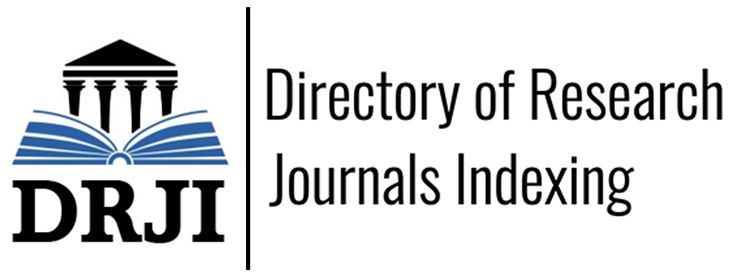Use of whey through anaerobic codigestion for biomethane production
Utilización del lactosuero mediante codigestión anaerobia para la producción de biometano
DOI:
https://doi.org/10.61210/kany.v2i2.97Palabras clave:
Biogas, Anaerobic digestion, Co-digestionResumen
The whey generated by cheese production is the main by-product generated by the dairy industry, which causes considerable impact on the environment if it is not treated properly. This potential contaminant is mainly due to its high content of organic matter. In recent years, numerous studies have been carried out with the objective of using whey more efficiently, using innovative technological methods for the treatment of wastewater such as the anaerobic digestion method, and thereby being able to obtain derived products such as biogas or biofuels, which generate less environmental impact and develop economic activities. The objective of this study is to collect studies on the use of whey to obtain biogas through the anaerobic digestion technique. The review allowed us to know the wide application of the anaerobic digestion method for the production of biogas from whey and other agri-food substrates, demonstrating the high efficiency of the method in association with biological media in semi-continuous and discontinuous conditions. Likewise, it was also possible to know that the anaerobic co-digestion method is a promising alternative for small and medium-sized industries that could replace fossil fuels with biogas and that in turn contribute to environmental conservation by avoiding pollution and environmental problems due to the effect of the poor serum management.
Citas
Aǧdaǧ, O. N., & Sponza, D. T. (2007). Co-digestion of mixed industrial sludge with municipal solid wastes in anaerobic simulated landfilling bioreactors. Journal of Hazardous Materials, 140(1–2), 75–85. https://doi.org/10.1016/J.JHAZMAT.2006.06.059
Arhoun, B. (2017). Digestión y codigestión anaerobia de residuos agrícolas, ganaderos y lodos de depuradora. In Tesis Dr. Universidad de Malaga.
Bella, K., & Venkateswara Rao, P. (2022). Anaerobic co-digestion of cheese whey and septage: Effect of substrate and inoculum on biogas production. Journal of Environmental Management, 308, 114581. https://doi.org/10.1016/J.JENVMAN.2022.114581
Bolen, T. J., Hasan, M., Conway, T., Stéphane Yaméogo, D. D., Sanchez, P., Rahman, A., & Azam, H. (2022). Feasibility assessment of biogas production from the anaerobic co-digestion of cheese whey, grease interceptor waste and pulped food waste for WRRF. Energy, 254, 124144. https://doi.org/10.1016/J.ENERGY.2022.124144
Carlini, M., Castellucci, S., & Moneti, M. (2015). Biogas Production from Poultry Manure and Cheese Whey Wastewater under Mesophilic Conditions in Batch Reactor. Energy Procedia, 82, 811–818. https://doi.org/10.1016/J.EGYPRO.2015.11.817
Casallas-Ojeda, M., Cabeza, I., Sanchez, N., Caicedo-Concha, D. M., & Astals, S. (2024). Cheese whey and dairy manure anaerobic co-digestion at psychrophilic conditions: Technical and environmental evaluation. Environmental Research, 118525. https://doi.org/10.1016/J.ENVRES.2024.118525
Charalambous, P., Constantinou, D., Samanides, C. G., & Vyrides, I. (2023). Enhancing biogas production from cheese whey using Zero-Valent Iron: A comparative analysis of batch and semi-continuous operation modes. Journal of Environmental Chemical Engineering, 11(6), 111278. https://doi.org/10.1016/J.JECE.2023.111278
Charalambous, P., & Vyrides, I. (2021). In situ biogas upgrading and enhancement of anaerobic digestion of cheese whey by addition of scrap or powder zero-valent iron (ZVI). Journal of Environmental Management, 280, 111651. https://doi.org/10.1016/J.JENVMAN.2020.111651
Comino, E., Riggio, V. A., & Rosso, M. (2012). Biogas production by anaerobic co-digestion of cattle slurry and cheese whey. Bioresource Technology, 114, 46–53. https://doi.org/10.1016/J.BIORTECH.2012.02.090
Cremonez, P. A., Teleken, J. G., Weiser Meier, T. R., & Alves, H. J. (2021). Two-Stage anaerobic digestion in agroindustrial waste treatment: A review. Journal of Environmental Management, 281, 111854. https://doi.org/10.1016/J.JENVMAN.2020.111854
Deshmukh, N., Rao, P. S., Sharma, H., M․H․, S. K., N․, L. N., & C․T․, M. K. (2024). Waste to nutrition: The evolution of whey, a byproduct to galactooligosaccharides production. Food Chemistry Advances, 4, 100642. https://doi.org/10.1016/J.FOCHA.2024.100642
Dopazo, V., Illueca, F., Luz, C., Musto, L., Moreno, A., Calpe, J., & Meca, G. (2023). Evaluation of shelf life and technological properties of bread elaborated with lactic acid bacteria fermented whey as a bio-preservation ingredient. Lwt, 174(January), 114427. https://doi.org/10.1016/j.lwt.2023.114427
Guo, M., & Wang, G. (2019). History of Whey Production and Whey Protein Manufacturing. Whey Protein Production, Chemistry, Functionality, and Applications, 1–12. https://doi.org/10.1002/9781119256052.CH1
Hashemi, S. S., Karimi, K., & Taherzadeh, M. J. (2022). Valorization of vinasse and whey to protein and biogas through an environmental fungi-based biorefinery. Journal of Environmental Management, 303, 114138. https://doi.org/10.1016/J.JENVMAN.2021.114138
Ivanchenko, A., Yelatontsev, D., & Savenkov, A. (2021). Anaerobic co-digestion of agro-industrial waste with cheese whey: Impact of centrifuge comminution on biogas release and digestate agrochemical properties. Biomass and Bioenergy, 147, 106010. https://doi.org/10.1016/J.BIOMBIOE.2021.106010
Kavacik, B., & Topaloglu, B. (2010). Biogas production from co-digestion of a mixture of cheese whey and dairy manure. Biomass and Bioenergy, 34(9), 1321–1329. https://doi.org/10.1016/J.BIOMBIOE.2010.04.006
Koutinas, A. A., Papapostolou, H., Dimitrellou, D., Kopsahelis, N., Katechaki, E., Bekatorou, A., & Bosnea, L. A. (2009). Whey valorisation: A complete and novel technology development for dairy industry starter culture production. Bioresource Technology, 100(15), 3734–3739. https://doi.org/10.1016/J.BIORTECH.2009.01.058
Kumar, A., Singh, E., Mishra, R., Lo, S. L., & Kumar, S. (2023). Global trends in municipal solid waste treatment technologies through the lens of sustainable energy development opportunity. Energy, 275, 127471. https://doi.org/10.1016/J.ENERGY.2023.127471
Liakos, D., Altiparmaki, G., Kalampokidis, A., Lekkas, D. F., & Vakalis, S. (2023). The role of hydrochar on the production of biogas and volatile fatty acids during anaerobic digestion of cheese whey wastewater. Sustainable Chemistry and Pharmacy, 35, 101153. https://doi.org/10.1016/J.SCP.2023.101153
Liu, X., Le Bourvellec, C., Yu, J., Zhao, L., Wang, K., Tao, Y., Renard, C. M. G. C., & Hu, Z. (2022). Trends and challenges on fruit and vegetable processing: Insights into sustainable, traceable, precise, healthy, intelligent, personalized and local innovative food products. Trends in Food Science & Technology, 125, 12–25. https://doi.org/10.1016/J.TIFS.2022.04.016
Manikandan, S., Vickram, S., Sirohi, R., Subbaiya, R., Krishnan, R. Y., Karmegam, N., Sumathijones, C., Rajagopal, R., Chang, S. W., Ravindran, B., & Awasthi, M. K. (2023). Critical review of biochemical pathways to transformation of waste and biomass into bioenergy. Bioresource Technology, 372, 128679. https://doi.org/10.1016/J.BIORTECH.2023.128679
Archivos adicionales
Publicado
Cómo citar
Licencia
Derechos de autor 2024 Perfecto Chagua Rodriguez, William Alberto Cochachi Poma, Wagner Pedro Soto Castilla

Esta obra está bajo una licencia internacional Creative Commons Atribución-NoComercial-CompartirIgual 4.0.
Eres libre de:
- Compartir — copiar y redistribuir el material en cualquier medio o formato
- Adaptar : remezclar, transformar y construir sobre el material.
Bajo los siguientes términos:
-
Reconocimiento : debe otorgar el crédito correspondiente, proporcionar un enlace a la licencia e e indicar si se realizaron cambios.
-
No comercial : no puede utilizar el material con fines comerciales.
-
ShareAlike : si remezcla, transforma o construye a partir del material, debe distribuir sus contribuciones bajo la misma licencia que el original.











